A warm breeze rustling through the trees, the crackling of a campfire, and the companionship of your furry friend – there’s something magical about tent camping with your beloved dog. Exploring the great outdoors together creates unforgettable memories and strengthens the bond between you and your loyal companion.
Tent camping with dog brings a sense of joy and adventure that’s hard to match. From morning hikes to evening stargazing, every moment shared with your four-legged friend becomes a cherished experience. Their excitement as they explore new scents and sights adds an extra layer of happiness to the trip, making it truly special.
While tent camping with your dog sounds idyllic, it’s essential to be well-prepared to ensure a successful and enjoyable adventure. Proper planning and safety precautions safeguard your pet and make the experience stress-free and relaxing for both of you. From packing the right gear to understanding your dog’s needs, a little preparation makes your camping trip unforgettable.
As we embark on this tent camping journey with our beloved dog, let’s delve into twelve tips and tricks to guarantee amazing fun and unforgettable moments under the stars. Together, we’ll discover how to make the most of this extraordinary bonding experience in the great outdoors. Let’s get ready for an adventure of a lifetime with our faithful companions by our side!
12 Tent Camping With Dog Tips and Tricks
Selecting the Right Campsite:
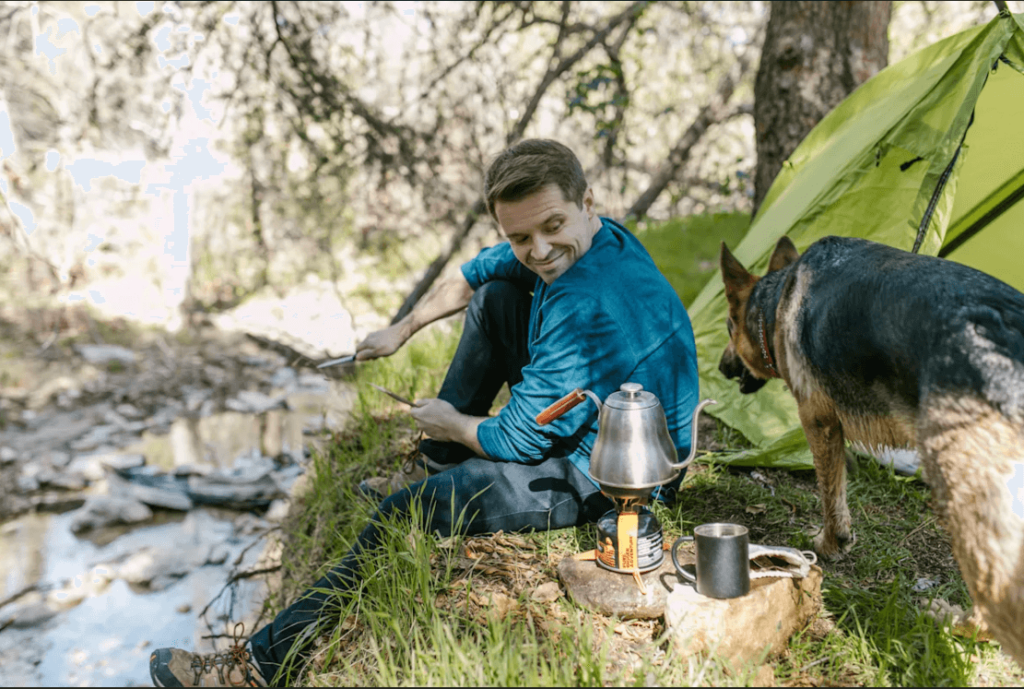
Dog-Friendly Campgrounds and Parks
While preparing for a tent camping excursion alongside your canine friend, the initial stride involves scouting for campgrounds and parks that extend a warm invitation to dogs. Not all camping destinations roll out the red carpet for pets, making it essential to conduct thorough investigations. Opt for a locale that overtly expresses its open arms towards furry companions, allowing your dog to explore unhindered and relish the untouched landscapes.
Checking Regulations and Leash Policies
Once you’ve pinpointed potential campsites that are open to dogs, make sure to review their guidelines and rules about leashes. Certain parks might call for dogs to be leashed constantly, while others could offer specific zones where they can roam without a leash. Following these regulations guarantees a peaceful and pleasant camping escapade for all involved.
Finding Pet-Friendly Amenities
Amenities like pet areas, pathways that invite dogs, and the presence of water resources are pivotal when setting off on a camping adventure with your four-legged friend. Seek out camping sites that offer these conveniences, as they streamline the task of caring for your furry buddy during the outing. Ensuring easy entry to water and provisions for waste management ensures that your companion stays comfortable and well-hydrated throughout the camping journey.
Packing Essentials for Your Dog
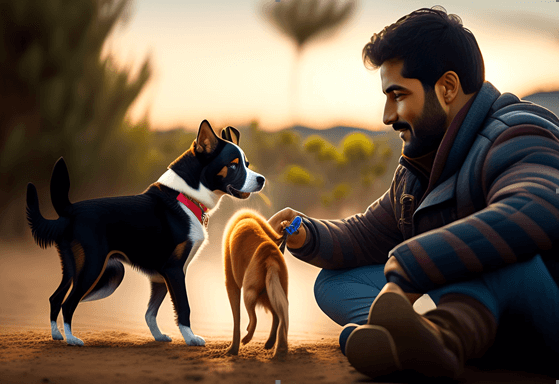
Food and Water Supplies
When embarking on a camping expedition alongside your canine companion, it is essential to prepare ample sustenance and hydration for the entirety of the journey. Please include your dog’s customary nourishment to uphold its dietary routine and avert any potential digestive complications. Portable and collapsible bowls designed for food and water are practical for dispensing nourishment and ensuring your furry friend remains well-hydrated throughout the escapade.
Dog-Friendly Sleeping Gear
Like yourself, your canine companion requires a comfortable spot to unwind after trekking and discovery. Remember to carry a sleeping pad tailored for dogs or a condensed dog bed to offer your furry pal a snug and recognizable space to slumber within the tent. Establishing a dedicated resting zone will also contribute to maintaining the tidiness and orderliness of your tent.
Collar, Tags, and Identification
While camping, your dog will be exposed to new sights and scents, making it essential to keep them properly identified. Double-check that your dog’s collar fits well, and securely fasten identification tags with your contact information. In case your furry friend gets separated, having visible identification can greatly increase the chances of a safe reunion.
First Aid Kit for Dogs
Unforeseen incidents can occur, even during a camping expedition. Thus, possessing a dedicated first aid kit designed for your canine companion is imperative. Incorporate supplies such as sterilizing wipes, dressings, tweezers (for tick removal), and any prescribed medications your dog requires. Please acquaint yourself with the kit’s components and their application in the event of an urgent situation.
Pre-Trip Training and Acclimatization
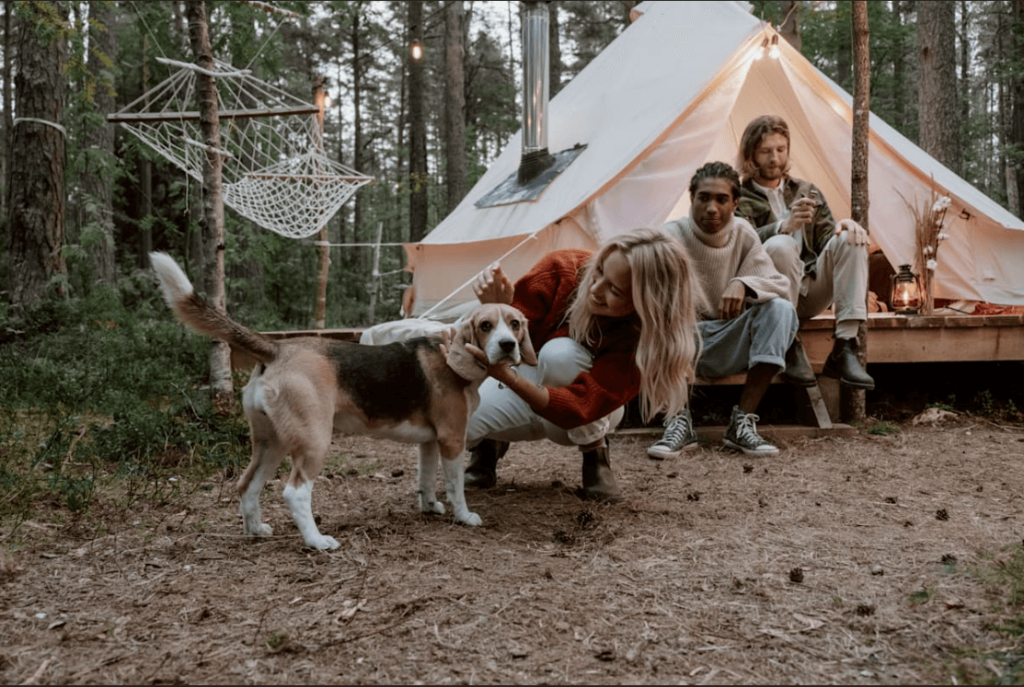
Gradually Introducing Your Dog to Camping Gear and the Tent
Before commencing your camping expedition, allocate a period to acquaint your canine with the camping equipment and the tent. Erect the tent in your backyard and permit your dog to investigate it at leisure. Transform this into a constructive and gratifying encounter by offering treats and commendations. This will enable your dog to establish a connection between the tent and a secure and pleasant haven, minimizing unease during the authentic camping journey.
Practicing Basic Obedience Commands
Ensuring your canine companion is adeptly trained is pivotal for a triumphant camping escapade. Before your journey, engage in honing fundamental commands of obedience such as “sit,” “stay,” “come,” and “leave it.” These directives will prove remarkably beneficial in maintaining authority over your dog amidst uncharted surroundings and in proximity to fellow campers or wildlife.
Preparing Your Dog for Wildlife Encounters
Your furry companion might encounter diverse fauna in the great outdoors, spanning squirrels, birds, and even larger creatures like deer. Educate your dog to remain composed and abstain from pursuing or approaching wildlife. This practice secures their well-being and safeguards the indigenous fauna and the delicate ecosystem.
Furthermore, if camping in a region recognized for encounters with sizeable wildlife such as bears, contemplate coaching your dog to react fittingly. In such scenarios, it’s optimal to keep your dog leashed and avoid leaving sustenance or pet food remnants within the campsite, as these can beckon undesirable visitors. Anticipating and taking proactive measures will provide a more secure and enjoyable camping experience for you and your four-legged companion.
Transporting Your Dog to the Campsite

Choosing the Right Travel Crate or Restraint
As you journey to the camping grounds, prioritize your dog’s security and contentment by employing a fitting travel enclosure or limitation. If you’re behind the wheel, ponder using a properly aerated and steadfast dog crate that allows your furry friend to perch, rise, and recline easily. Alternatively, you can utilize a dog seatbelt or harness that links to the vehicle’s seatbelt, ensuring your dog’s safe confinement throughout the voyage.
Keeping Your Dog Comfortable During the Journey
Extended car journeys can induce stress in certain dogs. Hence, optimizing the expedition’s comfort for your furry companion is imperative. Bring familiar items like your dog’s preferred blanket or plaything to offer a reassuring touch. Incorporate periodic halts during the trip, permitting your dog to elongate their legs, relieve themselves, and hydrate. Keep a constant supply of fresh water available, particularly in warm conditions.
Furthermore, sidestep leaving your dog solo within the vehicle, for temperatures can escalate rapidly, even on mild days, potentially causing heat-related ailments or suffocation. Should you need to leave the vehicle, ensure someone stays with your dog or locate pet-friendly venues where your canine can accompany you.
By embracing necessary precautions and upholding your dog’s ease throughout the excursion, you can reach the campsite with a gleeful and composed companion, fully geared up to partake in the outdoor escapade together.
Setting up the Campsite:
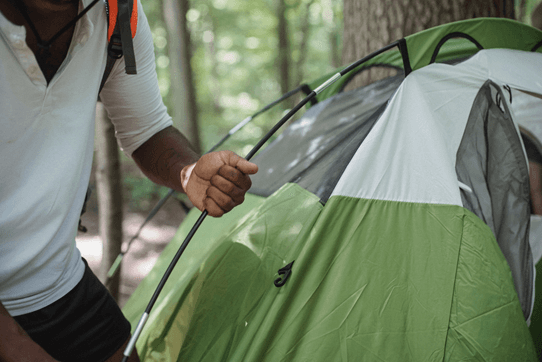
Designating the Dog’s Resting Area
As you reach the campsite, allocate a distinct zone for your dog’s repose. Opt for a location distant from possible dangers, such as open flames or pointed items. Carry your dog’s bed, covering, or portable cushion to establish a snug and recognizable nook for them to unwind. This assigned rest area will instill a sense of assurance in your dog, being upon them a secure haven for moments of repose.
Securing the Tent and Campsite to Prevent Escape
Before arranging your tent, survey the surroundings for any crevices or apes your dog could exploit for an exit. Are naturally curious and might favor venturing beyond the campsite, especially if alluring odors or wildlife beckon. Guarantee that the tent is firmly fastened with a zipper and that your dog cannot make a stealthy getaway.
You can also employ a mobile dog enclosure or an extension to give your dog room to maneuver while ensuring they remain confined within the campsite limits. Exercise constant supervision when your dog is tethered to avert entanglement or other potential risks.
Creating a Safe and Familiar Space for Your Dog
Canines flourish with consistency and a sense of the known. Thus, carry a few belongings from your abode to imbue the campsite with a comforting and recognizable ambiance. Stow their accustomed feeding and hydration vessels and cherished playthings and indulgences. The familiar scents will extend solace to your dog and amplify their delight during the camping escapade.
By orchestrating these measures to establish the campsite while prioritizing your dog’s well-being and comfort, you can cultivate a gratifying and tranquil camping episode for yourself and your beloved four-legged partner.
Exercise and Entertainment

Taking Regular Walks and Hikes
One of the most delightful aspects of camping, accompanied by your canine companion, is the doorway to open-air escapades. Capitalize on the gifts of the natural milieu and venture into the trails and pathways for hiking in unison. Consistent strolls and hikes furnish splendid physical conditioning for your dog and mental animation as they embrace newfound fragrances and sights.
Before embarking upon any trek, ensure the trail extends a warm welcome to dogs and suits your canine’s physical readiness. To avert overexertion, reflect upon variables, including span, landscape, and elevation. Tote along a dog-friendly knapsack to ferry some essentials such as water and treats, and always have a leash within easy reach to ensure safety during encounters with wildlife or other trekkers.
Engaging in Interactive Playtime
Amuse and involve your dog during leisure moments at the camping spot by integrating a spirited interactive pastime. Pack their favored playthings, like fetch orbs or chew objects and foster occasions for deepening your connection through amusement. Toys that trigger treats or perplexities designed to tease their cognitive skills can be notably engrossing for dogs, delivering mental invigoration, and fostering engagement.
Avoiding Overexertion in Extreme Weather Conditions
While engaging in outdoor pursuits is fundamental for upholding your dog’s overall wellness, it’s imperative to factor in the climatic circumstances. Dogs can swiftly become excessively heated during sweltering periods or fatigued in chilly temperatures. Persistently observe your dog for telltale distress signals, like excessive breathing, lassitude, or hesitance to persist in moving.
In soaring temperatures, strategize your hikes for the cooler junctures of the day, such as early dawn or late afternoon. Carry ample water for both you and your furry friend and take intervals in shaded zones to repose and cool off.
During frosty weather, furnish your dog with a snug, thermally insulated resting space within the tent. Have additional covers at hand to ensure their coziness during frosty nights.
By attaining a harmonious equilibrium between activity and reprieve, you can ensure your dog derives maximum gratification from their camping escapade while upholding their safety and well-being throughout the vacation.
Hygiene and Waste Management
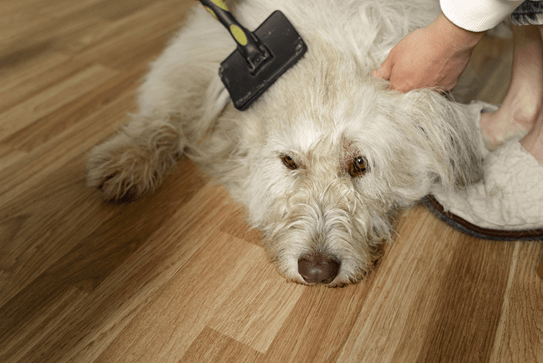
Properly Disposing of Dog Waste
Exercising conscientious waste control is paramount during camping endeavors with your canine companion, guaranteeing a departure devoid of any traces and upholding environmental preservation. Consistently tote waste receptacles to gather after your dog. Numerous camping grounds offer assigned pet waste stations where you can correctly dispense the waste.
Should you be camping in remote terrains or regions sans waste elimination amenities, adhere to the tenets of Leave No Trace. Bury your dog’s waste within a dug hole, known as a cat hole, dug to a minimum of six inches in depth and at a distance of 200 feet from water sources, pathways, and camping spots. This measure aids in curtailing the proliferation of microbes and maintains the environment’s immaculateness.
Keeping Your Dog Clean and Groomed
During your camping vacation, your dog can accumulate dirt and may come into contact with various natural constituents. Sustaining their sanitation and grooming is pivotal to their ease and well-being. Here are some suggestions for upholding your dog’s cleanliness:
1. Grooming: Engage in recurrent brushing of your dog’s fur to eliminate dirt, fragments, and snarls. This aids in averting matting and upholds a spotless and pest-free coat.
2. Paw Care: After hikes or ambles, cleanse your dog’s paws using a moist cloth or canine-compatible wipes to dispel mud and filth. Survey their paws for any lacerations, thorns, or debris requiring attention.
3. If in the event your dog becomes excessively muddied or malodorous, contemplate offering them a bath employing a dog-appropriate shampoo. Choose a biodegradable soap to mitigate ecological repercussions.
4. Tick Examinations: Undertake routine tick inspections of your dog, especially if your camping site is renowned for ticks. Swiftly and securely eliminate any ticks discovered.
5. Oral Well-being: Tend your dog’s oral cleanliness with dog-friendly toothpaste and a toothbrush. Regular oral upkeep is vital for their holistic well-being.
By upholding your dog’s neat holding and proper waste control, you ensure their ease during the camping journey and also play a role in conserving the natural surroundings for impending generations of campers and trekkers.
Fire Safety and Your Dog:

Teaching Your Dog to Stay Away from the Campfire
While camping, campfires can offer both warmth and a snug atmosphere. Nonetheless, they also harbor potential hazards for your canine companion. Instructing your furry friend to steer clear of the campfire is pivotal for their security and to stave off mishaps.
1. Fortify obedience: instructions like “stay” and “leave it.” Rehearse these commands consistently to familiarize your dog with them.
2. Delimitations: Delimit explicit parameters encompassing the campfire vicinity and employ visible markers or tangible barricades to sustain your dog at a secure interval. This might entail an assigned zone where your dog can unwind, safely aloof from the flames.
3. Surveillance: Exercise constant vigilance when your dog is near the campfire. Well-trained dogs might become inquisitive and approach the fire, particularly if lured by food scents or airborne embers.
Monitoring Your Dog Around Open Flames
Campfires can hold a mesmerizing allure for dogs, yet they might not grasp the potential peril. When camping, adhere to these safety protocols to safeguard your dog’s welfare:
1. Leash Restraint: Tether your dog near the campfire, particularly in bustling or unfamiliar camping zones. This inhibits them from straying too close to the blaze.
2. Fortified Campfire Perimeter: Establish a secure area surrounding the campfire using rocks or logs, discouraging your dog from venturing excessively close.
3. Proper Fire Extinguishing: Once the campfire has served its purpose, completely douse it. Dogs could be tempted to engage with the smoldering remnants, so ensure no live embers or incendiary materials remain.
4. Comfort and Diversions: Furnish your dog with a comfortable resting spot apart from the fire and introduce distractions like chew toys or interactive amusements to engage their attention.
Recall that fire safety is pivotal for your dog and the well-being of all at the campsite. By training your dog to avoid the campfire and meticulously monitoring their conduct near open flames, you can savor a camping escapade sans concern, accompanied by your beloved four-legged companion.
Wildlife Awareness and Safety:
Recognizing Potential Hazards in the Wilderness
While camping alongside your canine in the untamed expanses, remaining conscious of plausible wildlife perils becomes vital. A thorough comprehension of the local fauna can aid in implementing vital measures to ensure your dog’s security.
1. Investigate the Locale: Before your excursion, investigate the regional wildlife varieties prevalent in the camping vicinity. Please acquaint yourself with their routines and characteristics to enhance your grasp of prospective hazards.
2. Discern Menacing Wildlife: Cultivate awareness concerning creatures that might endanger your dog, encompassing bears, cougars, serpents, or belligerent territorial beings.
Preventing Encounters with Wildlife!
Safeguarding your dog from wildlife encounters is the prime strategy during camping expeditions. Adhere to these directives to curtail the odds of dangerous engagements:
1. Leash Restraint: Keep your dog leashed perpetually, particularly within locales frequented by wildlife. This upholds your command and precludes your dog from straying off course.
2. Eschew Commotion: Activities brimming with clamor and boisterous discussions can beckon wildlife. Keep noise levels subdued to avert luring wildlife nearer to your campsite.
3. Prudent Food and Waste Handling: Store sustenance and refuse in receptacles resistant to bears or suspend them from a tree distanced from your camping precinct. This averts the enticement of wildlife through food odors.
4. Adhere to Marked Trails: Stick to designated trails to curtail the hazard of inadvertent startling or unsettling of wildlife within their native habitat.
What to Do in the Event of an Encounter?
Despite your earnest endeavors, you might still find yourself amidst wildlife during your camping expedition. Familiarity with navigating such scenarios is pivotal for your dog’s well-being and safety.
1. Maintain Composure: In the event of a wildlife encounter, preserve your composure and abstain from abrupt motions. Slowly retreat from the creature without exposing your back.
2. Eschew Fleeing: Dashing off could elicit a pursuit reflex in predatory creatures. Stand firm and converse tranquility to communicate that you pose no threat.
3. Forge Room for the Creature: Furnish the wildlife ample space to withdraw. Never approach, trap, or attempt to feed feral animals.
4. Utilize Bear Spray if Essential: If you find yourself in bear country and a bear approaches, deploy bear spray to dissuade the creature and institute a distance.
Being aware of wildlife hazards, forestalling encounters, and grasping how to respond amid an encounter can substantially diminish the peril of harm to your dog and yourself while camping in the wilderness. By adhering to these precepts, you can cultivate a more secure and gratifying camping venture for you and your furry comrade.
Handling Emergencies and First Aid for Your Dog:

Common Camping-Related Injuries and Illnesses in Dogs
During your canine-accompanied camping escapade, priming for possible injuries and ailments that might unfold amidst the wilderness is imperative. Certain prevalent predicaments linked to camping for dogs encompass:
1. Lacerations and Grazes: Your dog might incur cuts and grazes as they explore uneven terrain or navigate the undergrowth and thorny bushes.
2. Insect Nips and Punctures: Wasps, bees, mosquitoes, and other insects can endanger your dog, notably if they possess allergies.
3. Heat Enervation and Desiccation: Sweltering climatic conditions could lead to heat enervation and desiccation in dogs, especially while partaking in demanding undertakings.
4. Muscle and Joint Twists: Trekking and uneven landscapes might induce twists and strains in your dog’s muscles and joints.
Knowing Basic First Aid for Dogs
Possessing rudimentary expertise in first aid can prove pivotal during moments of crisis. Contemplate assembling a tailored pet first aid kit and acquainting yourself with the following:
1. Wound Attention: Attend to minor scrapes and lacerations by cleansing and tending to them with antiseptic wipes and dressings.
2. Alleviating Insect Bites: Have a pet-appropriate solution or ointment to alleviate the discomfort of insect bites and stings.
3. Overseeing Heatstroke: Be well-versed in techniques to cool down your dog and provide hydration to avert or manage instances of heat depletion.
4. Immobilizing Injuries: Acquaint yourself by steadying your dog’s harmed limb using an improvised splint.
When to Seek Veterinary Care
While elementary first aid can help, there exist instances wherein immediate veterinary intervention becomes imperative. Promptly seek veterinary care when:
1. Bleeding is Excessive: If bleeding persists unabated or becomes profuse, your dog necessitates swift medical attention.
2. Respiratory Struggles: Breathing complications should never be disregarded; urgent assistance is indispensable.
3. Unconsciousness or Convulsions: Should your dog lose consciousness or endure seizures, hasten to acquire medical aid.
4. Ingestion of Hazardous Substances: Contact a veterinarian or the nearest animal hospital if your dog ingests a toxic substance.
Recall, despite your grasp of first aid principles, it’s invariably optimal to consult a veterinarian should uncertainty about your dog’s condition arise. Maintaining a well-provisioned first aid kit and grasping fundamental first aid measures can prove priceless while camping with your dog, ensuring their wellness and security amid the sprawling wilderness.
Leave No Trace with Your Dog:
Respecting Nature and the Environment
Embarking on a camping expedition with your faithful companion underscores the significance of adhering to the tenets of Leave No Trace, a fundamental philosophy that curtails your ecological footprint. Demonstrate reverence for the environment through:
1. Navigating Designated Pathways: Adhere to clearly delineated routes to avert unsettling wildlife and disrupt the inherent sanctity of natural enclaves.
2. Steering Clear of Vulnerable Zones: Maintain a respectful distance from delicate ecosystems like meadows and wetlands, safeguarding their intrinsic equilibrium.
Properly Disposing of Waste and Trash
Uphold the untamed beauty of nature by responsibly managing refuse and litter:
1. Attend to Your Dog’s Waste: Carry waste receptacles and meticulously tend to your dog’s waste, ensuring the campsite remains unblemished.
2. Transport Your Refuse: Equip yourself with eco-friendly waste bags and evacuate all waste upon your departure, leaving no trace behind.
Minimizing the Impact of Your Camping Trip
Diminish the ecological footprint of your camping journey to safeguard the wilderness for forthcoming cohorts to cherish:
1. Opt for Established Campgrounds: Whenever feasible, utilize preexisting camp locations to avert engendering fresh zones of influence.
2. Maintain Canine Restraint: Secure your dog with a leash, particularly in locales of fragility or congestion, to avert unsettling wildlife and fellow campers.
By upholding these Leave No Trace protocols, you can conserve the innate splendor of the outdoors and actively shield the ecosystem for the contemporary and future cohorts of outdoor enthusiasts and their beloved animal companions.
Dog Safety in the Wilderness:
Safeguard your four-legged companion’s security throughout your camping vacation with these indispensable insights:
1. Exercise Leash Vigilance in Uncharted Terrain: Safeguard your dog from venturing into unfamiliar domains or encountering potential perils by ensuring they remain tethered.
2. Stay Mindful of Possible Perils: Exercise caution regarding noxious vegetation, insects, and fauna that could jeopardize your dog’s welfare.
3. Furnish Appropriate Hydration and Respite: During hikes, ensure your dog stays hydrated and receives sufficient intervals of reprieve to avert overexertion.
4. Carry a Dog-Friendly Medical Kit: Equip yourself with a first aid kit tailored to your dog’s needs, and familiarize yourself with its usage, thus preparing for minor mishaps.
5. Monitor Canine Demeanor and Health: Keep a vigilant eye on shifts in behavior or indicators of discomfort in your dog. Routinely assess their well-being throughout the excursion.
By making your dog’s welfare and security paramount, you can relish an anxiety-free camping expedition in each other’s company, forging cherished recollections amid the great outdoors.
Additional Resources
If you are looking for more tutorials, walkthroughs and troubleshooting about camping and enjoying the outdoors, here are some additional posts to check out:
Conclusion
Embarking on tent camping escapades alongside your cherished canine offers a gratifying and memorable journey, fostering a profound connection between you and your four-legged cohort. By embracing the insights and strategies expounded within this manual, you can guarantee an expedition outdoors that is both secure and gratifying for you and your faithful companion.
Welcome the euphoria of traversing the natural realm with your canine confidant as your steadfast partner, infusing an additional zest and camaraderie into your camping escapades. Remember the mantle of responsibility you carry as a discerning pet custodian, exuding deference for wildlife and the environment through your commitment to leave-no-trace principles and ethical waste disposal.
As you forge into the wild, accord paramount importance to your dog’s security, well-being, and contentment, assiduously preparing them for the expedition. By upholding these precautions and maintaining a vigilant eye on latent hazards, you can etch enduring remembrances and savor the instants shared with your furry confidant amidst the grandeur of the untamed outdoors. Wishing you Happy camping! And thanks for reading.!

